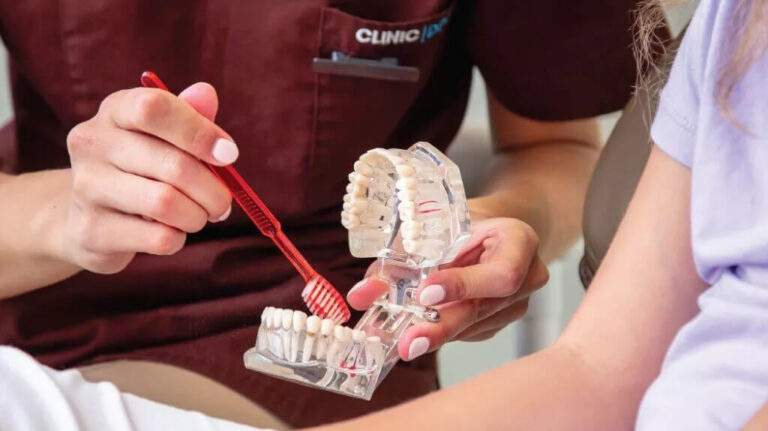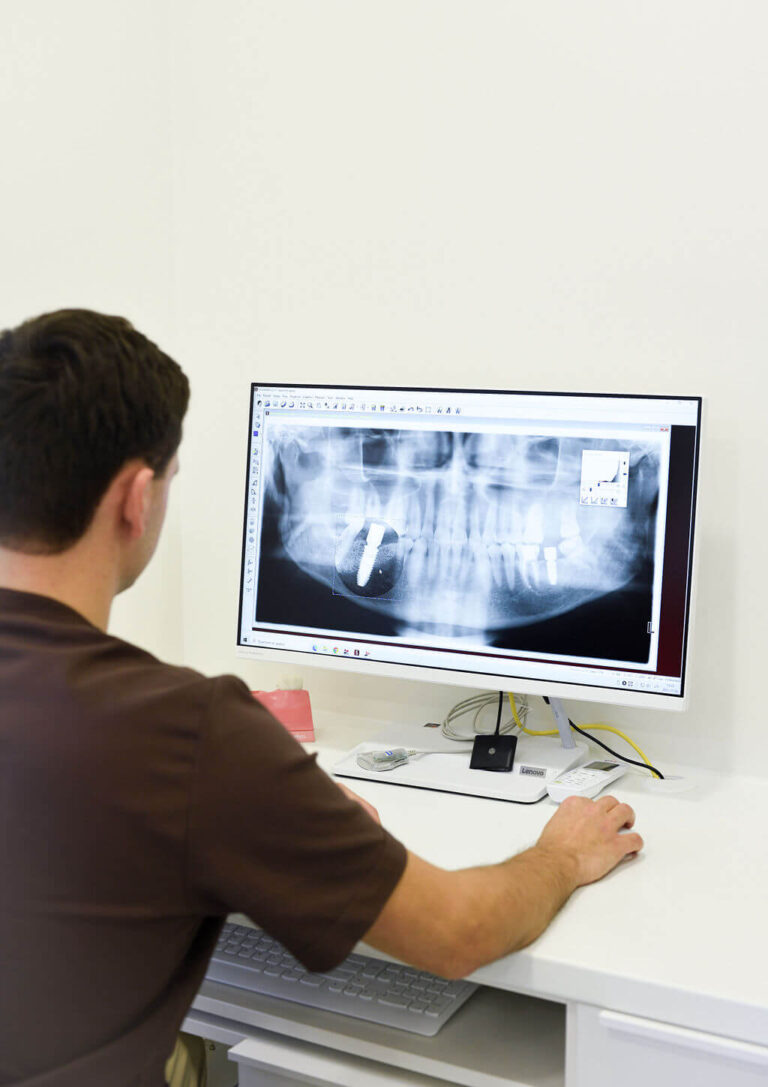February is Oral Cancer Prevention Month. We have also joined this social initiative – all Clinic DPC dental clinics.
Oral cancer is one of the most dangerous diseases of the mouth. If not treated in time, oral cancer can be a fatal disease and it is not always easy to spot the symptoms.
The disease is most often noticed when there is persistent pain and swelling in one area of the mouth. Cancer can occur in any part of the mouth: the lips, tongue, inside of the jaw, palate; sinuses and throat.
Causes of oral cancer
Alcohol and smoking are the main causes. If a patient regularly smokes or abuses alcohol, the likelihood of oral cancer increases by about 6 times. Additional risk factors include genetics (family history of cancer) and the habit of spending a lot of time in the sun without exposure to harmful UV rays. This is particularly dangerous for children.
Patient and professional responsibility
Both patients and primary care professionals (GPs, dentists, oral hygienists) are responsible for late or early diagnosis of oral cancer.
On the one hand, patients often don’t think of oral lesions as cancer because, for example, they’ve never heard of it, or because they’re just scared and in denial, even though they suspect it’s a serious condition. That is why educating people is so important, because early detection can be fatal.
There are also cases where the patient does not go to the doctor because of social factors, such as living in a remote area from which it is difficult to get to the clinic, or abusing psychoactive substances at the time. They also rarely visit a dentist or hygienist every six months, as recommended to maintain oral hygiene. If we followed such recommendations, we would give a specialist the opportunity to assess not only the teeth, but also the oral mucosa, and possibly detect precancerous lesions.
Symptoms of oral cancer
The worldwide consensus is that if a new pain, a change in the oral mucosa – a sore, wound, lump, tooth misalignment, bleeding or malocclusion – persists for two weeks, we should be alarmed and seek medical attention.
Another classic option is when a previously good dental plate starts to fail. In this case, you should always ask your dentist to check the plaque and, more importantly, the oral cavity to see if there are any changes in the mouth that have caused the plaque to become loose.
Symptoms outside the mouth that last for two weeks – a lump in the neck, an unexplained earache – are just as important and should make us worry.
The most common symptoms:
- – Oral bleeding unexplained by other causes.
- – Nerves and tissues in the oral cavity “receding”, where there is no pain, no touch, and difficulty moving the area.
- – Visually visible, unusual swellings, lumps, roughened surfaces, decaying tissue in the lips, gums or other parts of the mouth.
- – The appearance of red, purple or white ‘spots’ in the oral cavity.
- – Persistent, chronic pain in the face, neck or mouth.
- – Slow-healing (over 2 weeks) wounds in the mouth.
- – The feeling that something is constantly stuck in your throat.
- – Difficulty chewing and swallowing food, speaking, moving facial muscles.
- – Obvious and rapid weight loss.
If you experience any of these symptoms, we recommend that you visit your nearest CLINIC | DPC dental clinic immediately for a full oral examination.
Recommendation from a dentist
Even if you notice some worrying symptoms of cancer, we recommend not to panic – these could be symptoms of gum disease.
In any case, we recommend informing your dentist about these signs. To avoid these and similar symptoms, we recommend regular oral care and regular visits to your dentist and oral hygienist.
You can schedule a visit at your convenience by calling +370 632 00005 or by sending us an email. Email konsultacija@clinicdpc.lt.
Timely preventive check-ups can save your life!





